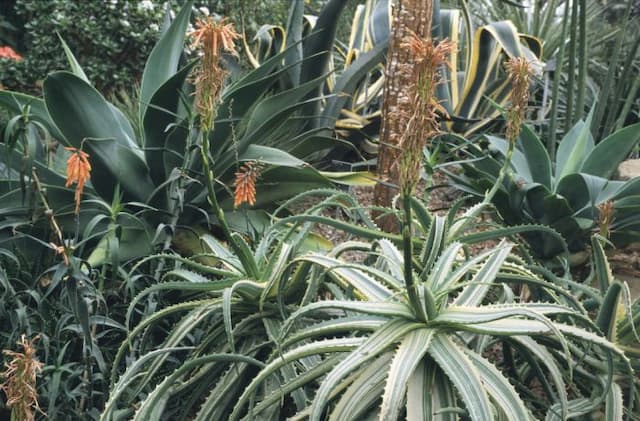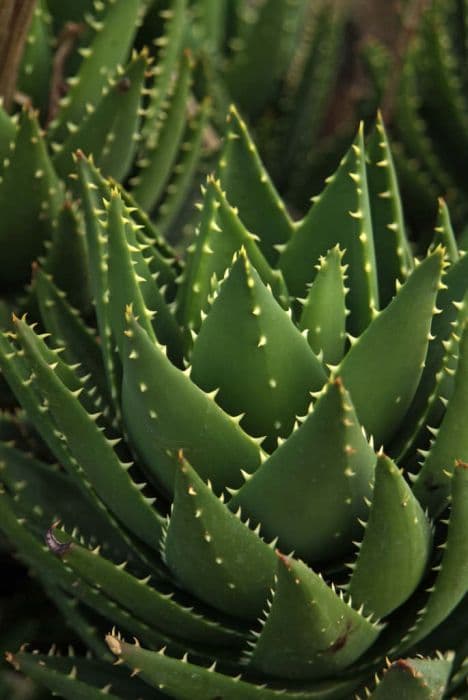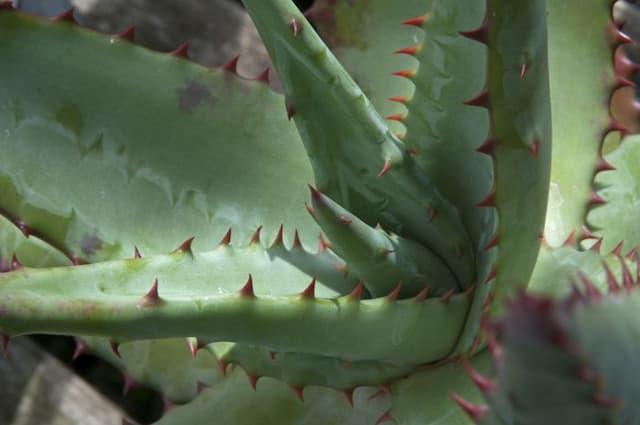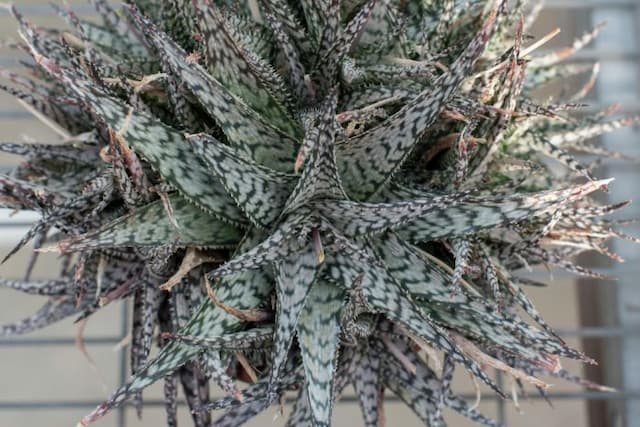Kniphofia 'Primrose Upward'

ABOUT
The Kniphofia 'Primrose Upward', commonly known as Red Hot Poker or Torch Lily, is a striking perennial plant known for its distinctive flowering spikes. It features robust, grass-like foliage that forms a clump at the base of the plant. The leaves are long, slender, and slightly arching, presenting a vibrant green color that provides a lush background for the blossoms. The most eye-catching aspect of the Red Hot Poker is its flower spikes, which are dense with tubular flowers. These blossoms are arranged in a unique gradation of color that changes as they mature. They typically start with a creamy yellow or primrose color at the top and gradually transition to a rich orange or fiery red towards the bottom, giving the impression of a flaming torch. The flowers are borne on sturdy, upright stems that rise above the foliage, creating a bold vertical element in the garden. Their bright colors are highly attractive to hummingbirds and various pollinating insects. The blooming period of Red Hot Poker occurs in the summer, during which time the plant adds a dramatic burst of color to the landscape. After the flowering peak, the faded blooms can be removed to tidy up the plant and sometimes encourage a second bloom. Overall, the Red Hot Poker's foliage, combined with its distinctive, colorful flower spikes, makes it a popular choice for adding texture and a splash of warm color to garden borders, rock gardens, and mixed perennial beds.
About this plant
 Names
NamesFamily
Asphodelaceae
Synonyms
Red Hot Poker, Torch Lily, Tritoma
Common names
Kniphofia 'Primrose Upward'.
 Toxicity
ToxicityTo humans
Red hot poker, including the 'Primrose Upward' variety, is not commonly known to be toxic to humans. However, it is always advisable to avoid ingestion of plant parts that are not typically considered food, as they could potentially cause a mild stomach upset or an allergic reaction in sensitive individuals.
To pets
Red hot poker is not listed as a toxic plant to pets, such as cats and dogs. Nevertheless, ingestion of non-edible plants can sometimes lead to gastrointestinal discomfort, including vomiting or diarrhea. If a pet ingests a large amount of this plant, it is wise to monitor for any signs of distress and consult a veterinarian if any unusual symptoms arise.
 Characteristics
CharacteristicsLife cycle
Perennials
Foliage type
Evergreen
Color of leaves
Green
Flower color
Yellow
Height
2-3 feet (0.6-0.9 meters)
Spread
1-2 feet (0.3-0.6 meters)
Plant type
Herb
Hardiness zones
5-9
Native area
South Africa
Benefits
 General Benefits
General Benefits- Attracts Pollinators: Kniphofia 'Primrose Upward', also known as Red Hot Poker, draws bees, butterflies, and hummingbirds to the garden, helping to pollinate other plants.
- Drought Tolerant: Once established, it is highly tolerant of drought conditions, making it a great choice for water-conservative landscaping.
- Deer Resistance: Its foliage and flowers are not preferred by deer, reducing the likelihood of damage in areas with high deer populations.
- Visual Interest: With its striking flower spikes and unique shape, the Red Hot Poker adds an eye-catching element to garden designs.
- Long Blooming Period: It flowers from late spring through summer, providing a long season of color.
- Low Maintenance: Requires minimal care once established, making it suitable for gardeners of all skill levels.
- Hardiness: It is hardy in a range of climates, thriving in USDA Hardiness Zones 5-9.
- Versatile Garden Use: Can be planted in borders, flower beds, and as a focal point in garden landscapes.
- Cut Flower: The blooms make excellent cut flowers, adding a dramatic flair to floral arrangements.
 Medical Properties
Medical PropertiesThis plant is not used for medical purposes.
 Air-purifying Qualities
Air-purifying QualitiesThis plant is not specifically known for air purifying qualities.
 Other Uses
Other Uses- The tall and striking flower spikes of Kniphofia, also known as Red Hot Poker, can be dried and used as part of floral arrangements or as a natural art piece within home decor, giving a unique and rustic touch to the interior.
- In garden design, Red Hot Poker can serve as a living fence or border when planted in a linear fashion, offering a natural and vibrant barrier that can deter small animals due to its height and structure.
- Kids can use the sturdy, tall stems of Red Hot Poker as natural supports for lightweight garden tents made from fabric or paper, contributing to creative outdoor play areas.
- The vibrant flowers of Red Hot Poker can be used to make natural dyes for fabrics or arts and crafts projects, providing an orange to red range of colors depending on the part of the plant used.
- As a garden teaching tool, the Red Hot Poker plant can be used to explain and demonstrate to students or gardening enthusiasts the importance of flora for pollinators, as it's particularly attractive to bees and hummingbirds.
- Due to its robust nature, Red Hot Poker can be used as an indicator plant in gardens to signal when the soil is too dry or nutrient-poor, prompting gardeners to adjust their maintenance routine.
- Red Hot Pokers can be included in permaculture designs as a hardy perennial that requires minimal maintenance, thus helping build sustainable garden ecosystems.
- The plant can be used in the culinary arts as an unusual and decorative edible flower addition to salads, albeit with a mild flavor, adding an exotic touch to dishes.
- Photographers can utilize Red Hot Poker as a compelling subject in macro photography, capturing the intricate details and vibrant colors of the blooms.
- In crafting, the seed pods of Red Hot Poker can be used to create eco-friendly, biodegradable beads for jewelry making, giving a natural look to handmade accessories.
Interesting Facts
 Feng Shui
Feng ShuiRed hot poker is not used in Feng Shui practice.
 Zodiac Sign Compitability
Zodiac Sign CompitabilityRed hot poker is not used in astrology practice.
 Plant Symbolism
Plant Symbolism- Standing out in a crowd - The Kniphofia, commonly known as "Red Hot Poker" or "Torch Lily," features striking spikes of flowers that stand out prominently in the garden, representing uniqueness and the courage to be different.
- Attraction - Its bright flowers not only attract the attention of people but also hummingbirds and other pollinators, symbolizing an allure or magnetism to something desirable.
- Passion - The vivid coloration of the red or orange blooms can symbolize intense emotions, often associated with love or desire.
- Vibrancy and life - Red Hot Poker's lush foliage and bright flowering spikes embody vitality and the energy of life.
 Water
WaterRed hot poker plants, like Kniphofia 'Primrose Upward', should be watered deeply, allowing water to penetrate the soil to a depth of 1-2 inches. They require consistent moisture, especially during their blooming period in the summer. Water the plant approximately once a week, providing about 1 gallon of water per session for each plant, ensuring you're not just wetting the surface but soaking the soil. During periods of extreme heat or drought, increase watering frequency to prevent stress. In the winter, water sparingly, just enough to prevent the soil from completely drying out.
 Light
LightRed hot poker plants thrive in full sun, needing a spot that receives at least 6 to 8 hours of direct sunlight daily. The best location would be an open garden area clear of shade or shadow-casting structures or trees. These plants can tolerate some light shade, especially in hotter climates, but bloom best when provided with ample sunshine.
 Temperature
TemperatureRed hot poker plants are hardy and can tolerate a wide range of temperatures, thriving in temperatures between 50°F and 85°F. They are capable of withstanding low temperatures down to around 0°F, but flowers and foliage can be damaged by frost. It's best to plant them in a spot that is protected from severe winter winds.
 Pruning
PruningPruning red hot poker plants is important to encourage more blooms and maintain a tidy appearance. After flowering, trim the flower stalks down to the base to prevent self-seeding and to promote a second flush of flowers. Additionally, remove any damaged or yellowing leaves to keep the plant healthy. The best time for pruning is immediately after the bloom cycle is complete.
 Cleaning
CleaningAs needed
 Soil
SoilRed hot poker, or Kniphofia 'Primrose Upward,' thrives best in well-draining soil with a pH ranging from 6.0 to 6.5. A mix of loam, sand, and a bit of organic matter like compost is ideal to provide the necessary drainage and nutrients. Mulching can help maintain soil moisture and temperature.
 Repotting
RepottingRed hot pokers, such as Kniphofia 'Primrose Upward,' seldom require repotting and do so well when left undisturbed for several years. Repotting is typically only necessary if the plant outgrows its space or needs division, which may be every 3-5 years.
 Humidity & Misting
Humidity & MistingRed hot poker, also known as Kniphofia 'Primrose Upward,' prefers moderate humidity levels but is quite adaptable and can tolerate the humidity found in most temperate climates well.
 Suitable locations
Suitable locationsIndoor
Place in bright light, minimal water, well-draining soil.
Outdoor
Full sun, well-drained soil, protect from harsh winter.
Hardiness zone
6-9 USDA
 Life cycle
Life cycleThe life cycle of the Red Hot Poker 'Primrose Upward' begins with seed germination, where seeds need a warm temperature to start developing. The next stage is seedling growth, where two true leaves will emerge, followed by the development of a foliage clump of narrow, grass-like leaves. As the plant matures, it enters the vegetative stage, where it grows larger and stores energy in an underground rhizome. Following the vegetative phase, the plant enters the flowering stage, usually in the summer months, producing tall spikes of tubular, primrose yellow flowers that attract pollinators. After flowering, seed pods form and, once mature, release seeds for dispersal, allowing the cycle to begin anew. In between flowering cycles, the plant remains in a period of maintenance, with care directed towards preserving the health and vigor of the foliage and root system to support subsequent blooming.
 Propogation
PropogationPropogation time
Spring-Early Summer
Kniphofia 'Primrose Upward', commonly known as Red Hot Poker, is typically propagated by division in the spring. The most popular method involves carefully lifting the established plant with a garden fork, taking care not to damage the root system. The clump should be divided into smaller sections, each with a portion of the roots and at least one growing point or shoot. These divisions can then be immediately replanted into well-preparing planting holes, making sure to space them appropriately to accommodate future growth. Water the new divisions thoroughly after planting to help establish them. This method of propagation is effective because it not only creates new plants but also revitalizes the parent plant, encouraging more vigorous growth and flowering.









